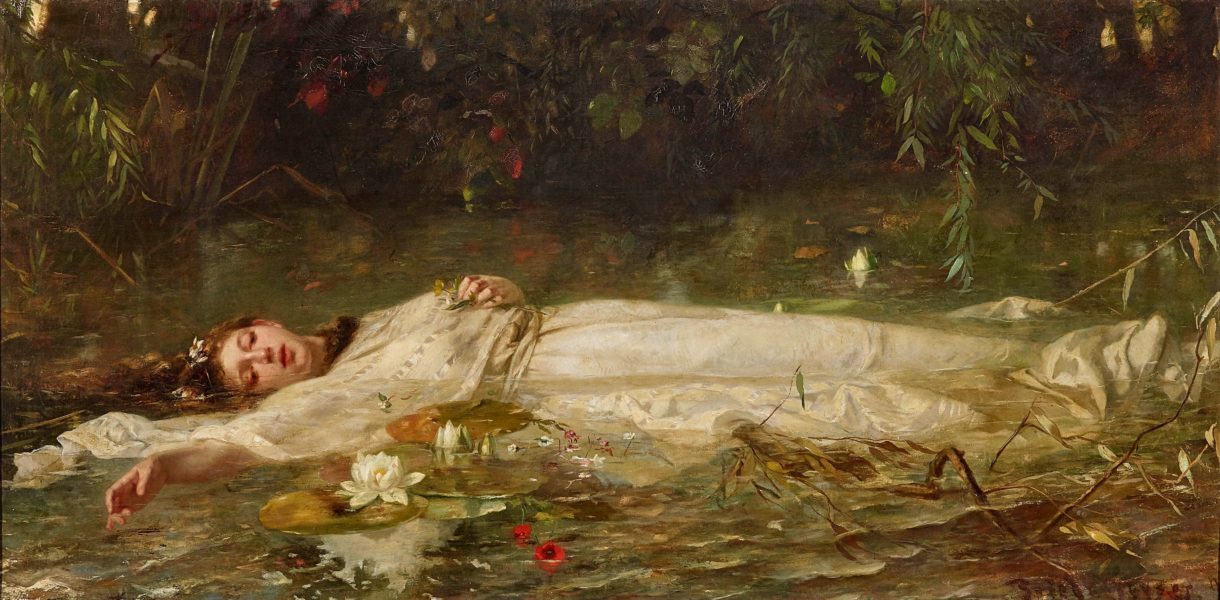Art and the Epidemic of the Tearful Selfie
“If you didn’t take a selfie after crying, did you really even cry?” my friend asks me, only half-joking. It’s a knowing rib at our generation and a simultaneous request for validation; if I admit to the same habit, her quirks will be normalized.
“No, you’re right,” I say. I am guilty of the post-crying selfie. Even as a young girl, I remember surveilling myself as and after I cried. I watched my mouth twist in the mirror with disdain, upset that I couldn’t manage the stoic weeping of the women I saw in television and movies. Afterward, I stood before the mirror and conducted a thorough inspection. Tears clumped my lashes into shining black arcs. My cheeks and nose shone pink. The green of my eyes was made vibrant against their bloodshot backdrop. Whatever loss had prompted the tears was still sore, but I could take solace in the picturesque state of my post-weeping countenance.
I rarely cry nowadays. When I do, I ensure that it’s in the privacy of my own home. There will be no witnesses. Save, of course, the all-consuming eye of my camera lens. Invariably, I turn the camera on myself after crying, toss up a peace sign, and snap a picture. I study the image the same way my childhood self observed her reflection in the mirror. Though I never send the image to anyone, I do consider it. It would act as the particular comedic cry for help I’ve grown adept at executing. In pursing my lips and posing with my red eyes and wet cheeks visible, I render my suffering a spectacle. My sadness is reflected in caricature, and it doesn’t hurt so much anymore.
Even while hovering my finger over the photo button, though, I feel unsettled by my dystopian reaction to my own emotions. Somewhere, I’m sure a 60-year-old cartoonist is frantically scribbling my predicament down and administering a scathing admonishment of the millennial condition. I don’t like my self-imposed surveillance, but the curiosity always gets the better of me. What’s the point of crying if I can’t at least bask in the post-crying glow?
This is an empty justification. The point of crying is, of course, release. At least, that’s what it is to me. For such a fundamentally human behavior, our knowledge surrounding crying boasts surprisingly significant gaps. Researchers generally agree that crying offers relief from the magnitude of our emotions, though even this hypothesis has been contested. Speaking purely from my own experiences, I subscribe to the theory of catharsis. Crying is a way for me to indulge in and assuage my emotions every now and then.
Interestingly, some researchers have posited that crying serves a social function, as well. Tears, they theorize, are a nonverbal request for help. Where words fail, crying signals to others that we are in need of sympathy, comfort and assistance. Maybe this explains my turn to the camera after crying. Communication, for me and most people my age, largely takes place virtually. My first instinct could be less about taking a photo and more about reaching out to someone in a moment of vulnerability.
It’s a comforting thought, but I know it’s another excuse. Because, as I stated earlier, I don’t send anyone those photos. They don’t grace the feeds of my social media accounts. I delete them the moment after I’ve absorbed the fall of my tear-stained face. Most others guilty of the post-cry selfie do the same. At least, I assume as much.
Crying selfies is a closed-door phenomenon, and understandably so. Current social media culture mandates that our Twitter, Instagram and Snapchat accounts serve to document the high points in life. There’s a reason college students post photos of spring break beach getaways during finals season; the glamor of a tropical vacation is suited for our Instagram feeds, while sleep deprivation and the stress of our exams are unsightly under social media’s critical eye. Though the rare social media user aspires to a more transparent profile, the vast majority of users curate their profiles to reflect a life devoid of conflict.
Many of us are aware, however, of the way we surveil ourselves when we cry. Whether through the front-facing camera or in the mirror, we become voyeurs to our pain. Many of us have no trouble admitting we’re doing it. When I asked my friends if they inspected their appearances after crying, I was met with a unanimous affirmative. A search for “crying selfies” on Twitter reveals a host of users reveling in the clarity of their skin and the definition of their lashes after a good cry. Redbubble offers a range of products depicting modified emojis crying beside their own meek peace signs. Across countries and cultures, we are reaching for our phones long before we reach for the tissues after crying.
In researching the post-cry selfie, I noticed that it was a distinctly female experience. This didn’t surprise me. Most cultures discourage men from crying, so the logic follows that they would want as little evidence of their sorrow as possible. Conversely, it makes sense that women are keener to document their suffering. Art has a long history of fetishizing female pain. Growing up in a culture that romanticizes the throes of feminine suffering, it makes sense that women internalize this desire to perform sorrow beautifully.
And yet, the suffering both art and our selfies present us with is not the true face of our sorrow. Michelangelo’s Pietà depicts a lifeless Jesus laid across Mary’s lap. Her head tilted downwards in grief and her palm lifted in divine supplication, she is undoubtedly in mourning. Nonetheless, her face tells a different story. Rather, it tells no story. Mary, staring at the body of her deceased son, is expressionless. One would be forgiven for assuming she was asleep. Her face’s only notable feature is her youth. The mother of a 33-year-old, Mary would be at least middle-aged at the time of Jesus’s death. Depicting the Madonna as a beacon of eternal youth is a long-held artistic convention intended to signify her everlasting purity (which raises a whole bevy of issues on its own, but that’s a discussion for a later date). Her youthfulness and her stoicism ensure that Mary is not granted her sorrow. She is not allowed to scream or rage or wail. Suffering, when embodied by a woman, must be beautiful.
This trend repeats itself throughout history. Any of the many depictions of Ophelia’s drowning show us a young, white woman bedecked in a dazzling gown floating amongst waterlilies and wildflowers. Her features are delicate and slack, her madness erased by her indisputable loveliness. The features of Pablo Picasso’s Weeping Woman are characteristically distorted, but the hallmarks of artistic depictions of female pain are intelligible; wide, glistening eyes, a bristle of thick eyelashes, a flush on the cheeks and nose. Pop artist Roy Lichtenstein produced a variety of works portraying weeping women. Aside from the thick tears dripping along their lashlines, there’s little evidence that these women are in pain. Their lips are expertly filled-in with lipstick, their cheeks unblemished by tracks of mascara. Time after time, we are shown that female suffering must be beautiful before it must be realistic. Women are not permitted the kind of facial acrobatics all humans perform while crying. Our mouths contort, our brows knot, our foreheads crease and our eyes screw shut. This is not the sort of pain art is documenting, nor is it the sort of pain we are capturing in our photos.
The post-crying selfie erases the ugliness of our pain. It captures the aftermath, the brand of suffering so much art and television and film thinks is innate to femininity. No one is bearing witness to the apotheosis of our pain, the climax of our panic attacks and depressive episodes. No paintings show a woman unable to pull herself out of bed due to her depression. No brushstrokes are dedicated to her uncombed hair or her unbrushed teeth. The statues we commend are not those that depict a woman curled in on herself in anxiety. Artists are quick to capture the waifish slips of girls diagnosed with eating disorders, but they fail to portray the alcoholism, purging, and hair loss that often accompany these illnesses. Women are permitted their pain only when it is palatable to the male gaze.
The need to replicate the graceful suffering we’ve seen in art is deeply-ingrained. Women face pressure from the media, coworkers, friends and partners to look good no matter where they are or what they’re doing, and this pressure extends to our times of sorrow. No matter how fresh the wound or deep the ache, we use the post-crying selfie as a means to monitor ourselves and ensure we are still within the bounds of what’s considered attractive.
I want both my pain and my ugliness. I want to hold them over my head like trophies. I want to throw a fit and cry long and loud and I want to look horrendous doing it. The next time I cry, I don’t want to worry over whether or not my sobs are too loud or if the fall of my mouth is unappealing. Those moments after crying, I think, should be a period of decompression, not one of carefully-angled selfies. The only witness to my weeping is myself. She is the only person whose expectations I must fulfill. If I bat the camera out of her hand or angle her face away from the mirror, she can’t impose her critiques on my suffering. I’ll have the opportunity to reclaim my emotions with the understanding that I don’t experience pain because it renders me the glistening portrait of female misery. I experience pain because I am human, and I do not have to document or edit that pain for anyone’s consumption.






